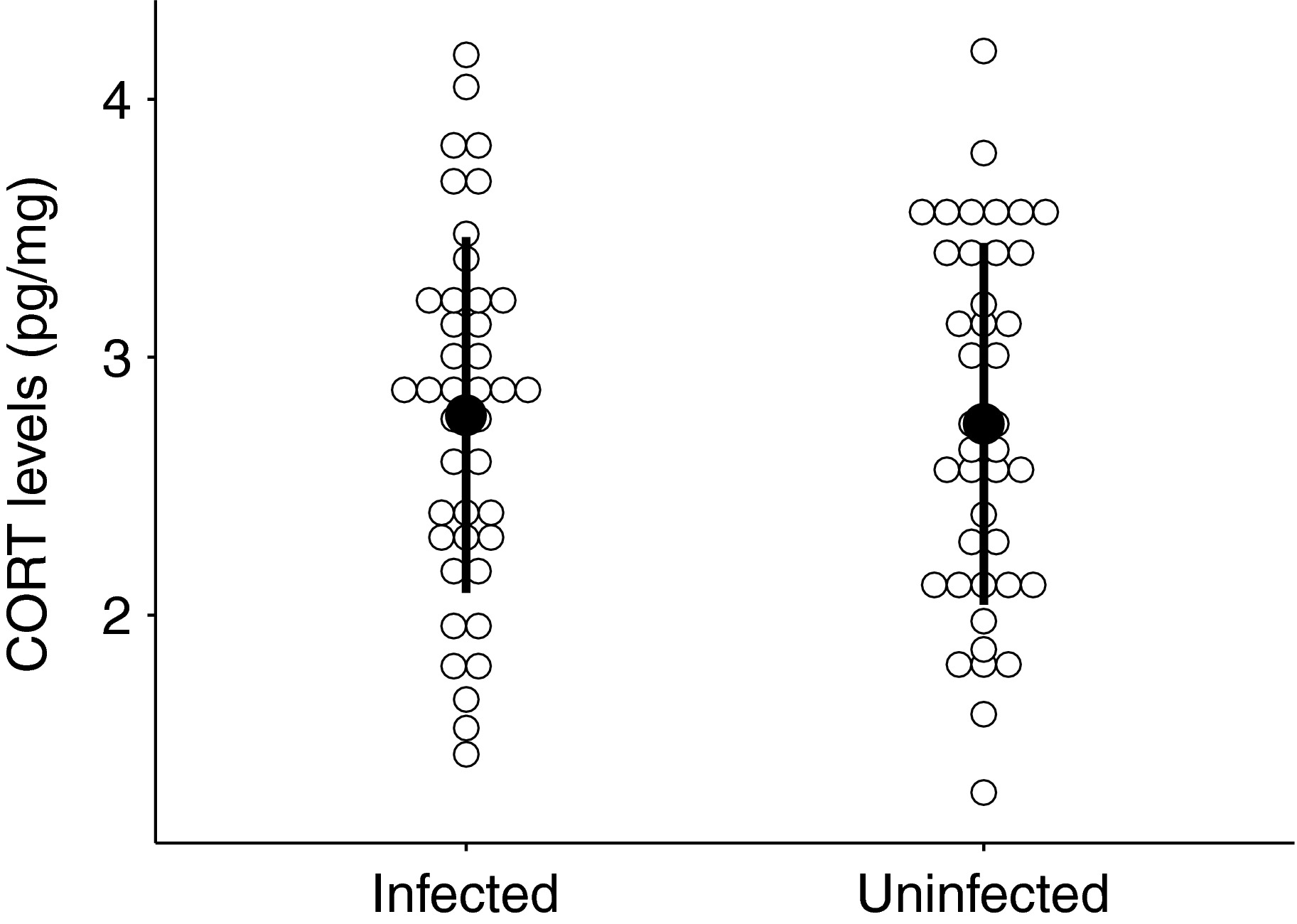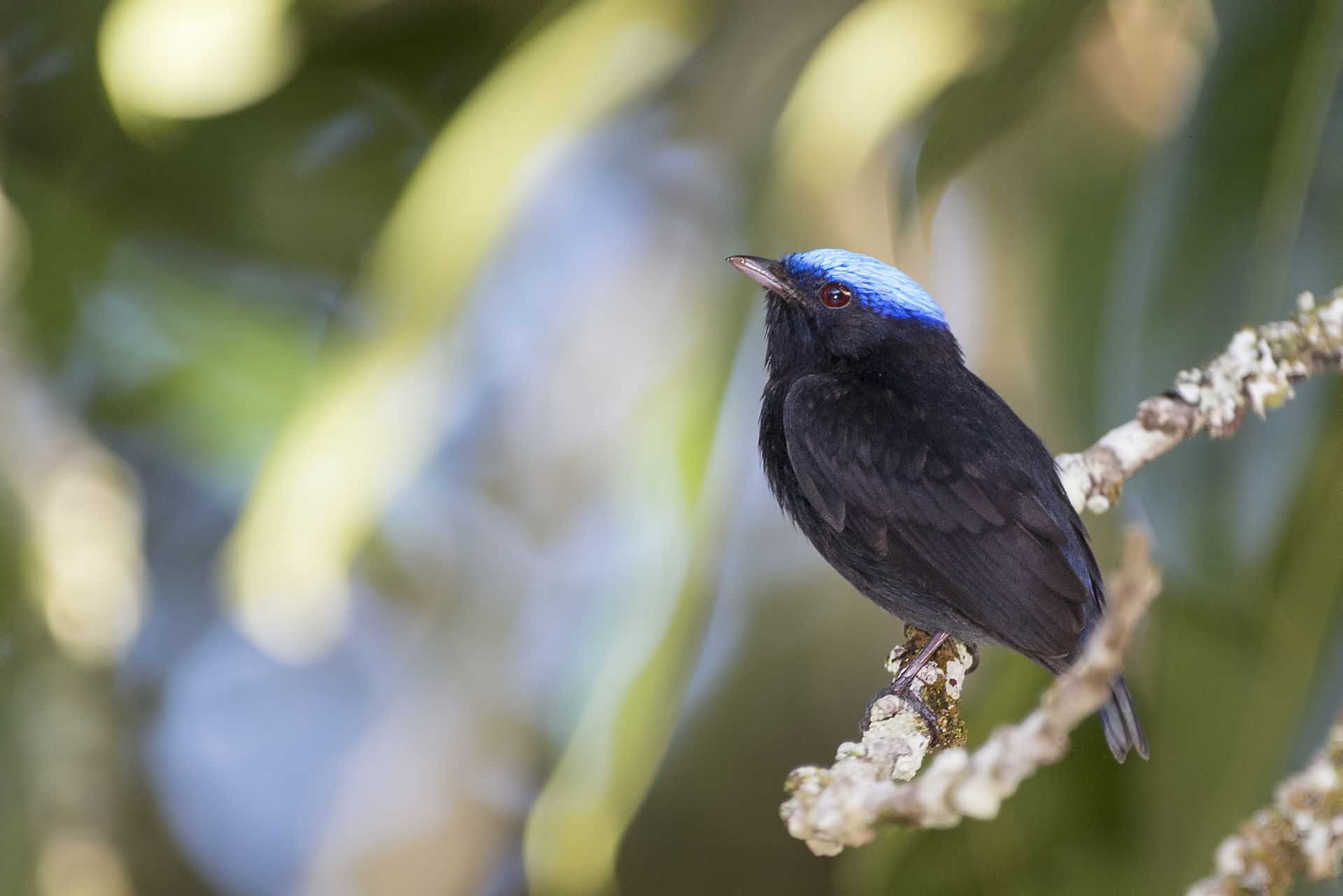LINKED PAPER
Individual variation in feather corticosterone levels and its influence on haemosporidian infection in a Neotropical bird. Bolsholn, M., Anciaes, M., Weckstein, J. D., Dispoto, J. H. & Fecchio, A. 2019. IBIS. DOI: 10.1111/ibi.12709. VIEW
The hormone corticosterone plays a vital role in the energy regulation of birds (Schoech et al. 2011). But too much of this hormone can have negative health effects, including suppression of the immune system. This makes individuals more susceptible to infections (Roberts et al. 2004). From this information, we can formulate a simple prediction: birds with higher levels of corticosterone will have more parasite infections. An international team of ornithologists tested this prediction in the Blue-crowned Manakin (Lepidothrix coronata), a small songbird common in Amazonian Brazil.
Blood parasites
The researchers captured 82 manakins and checked their blood for parasites using a genetic approach. If the birds are infected with blood parasites, the DNA of these critters should be detectable. The genetic analyses revealed that half of the sampled manakins were infected with blood parasites, representing nine different types. Young individuals had higher infection rates compared to adults. Their immune system is probably less well developed, making them more susceptible to infections (Sol et al. 2003, van Oers et al. 2010).

Figure 1 There is no difference in corticosterone level between infected and uninfected birds. The open circles indicate corticosterone levels for individual birds, the black circles represent the mean value.
Explanations
We predicted a positive relationship between corticosterone levels and parasite infections, namely infected birds should have higher levels of corticosterone. This was, surprisingly, not the case: corticosterone levels did not differ between infected and uninfected individuals. What could explain this result? The researchers offer two possible reasons. Perhaps the corticosterone levels did not reach sufficiently high levels to affect the birds’ immune system. Only extremely high levels might result in serious health issues (Romero et al. 2009). Alternatively, individuals with high corticosterone levels and high parasite infections did not survive and were not included in the sampling. It seems likely that other (ecological) factors determine the occurrence of blood parasite infections in the Blue-crowned Manakin.
References
Roberts, M. L., Buchanan, K. L., & Evans, M. R. 2004. Testing the immunocompetence handicap hypothesis: a review of the evidence. Animal Behaviour 68: 227-239. VIEW
Romero, L. M., Dickens, M. J., & Cyr, N. E. 2009. The reactive scope model — A new model integrating homeostasis, allostasis, and stress. Hormones and Behavior 55: 375-289. VIEW
Schoech, S. J., Rensel, M. A., & Heiss, R. S. 2011. Short- and long-term effects of developmental corticosterone exposure on avian physiology, behavioral phenotype, cognition, and fitness: A review. Current Zoology 57: 514-530. VIEW
Sol, D., Jovani, R., & Torres, J. 2003. Parasite mediated mortality and host immune response explain age-related differences in blood parasitism in birds. Oecologia 135: 542-547. VIEW
van Oers, K., Richardson, D. S., Sæther, S. A., & Komdeur, J. 2010. Reduced blood parasite prevalence with age in the Seychelles Warbler: selective mortality or suppression of infection? Journal of Ornithology 151: 69-77. VIEW
Image credits
Featured image: Blue-crowned Manakin Lepidothrix coronata | Ltoniolo | CC BY-SA 4.0 Wikimedia Commons




